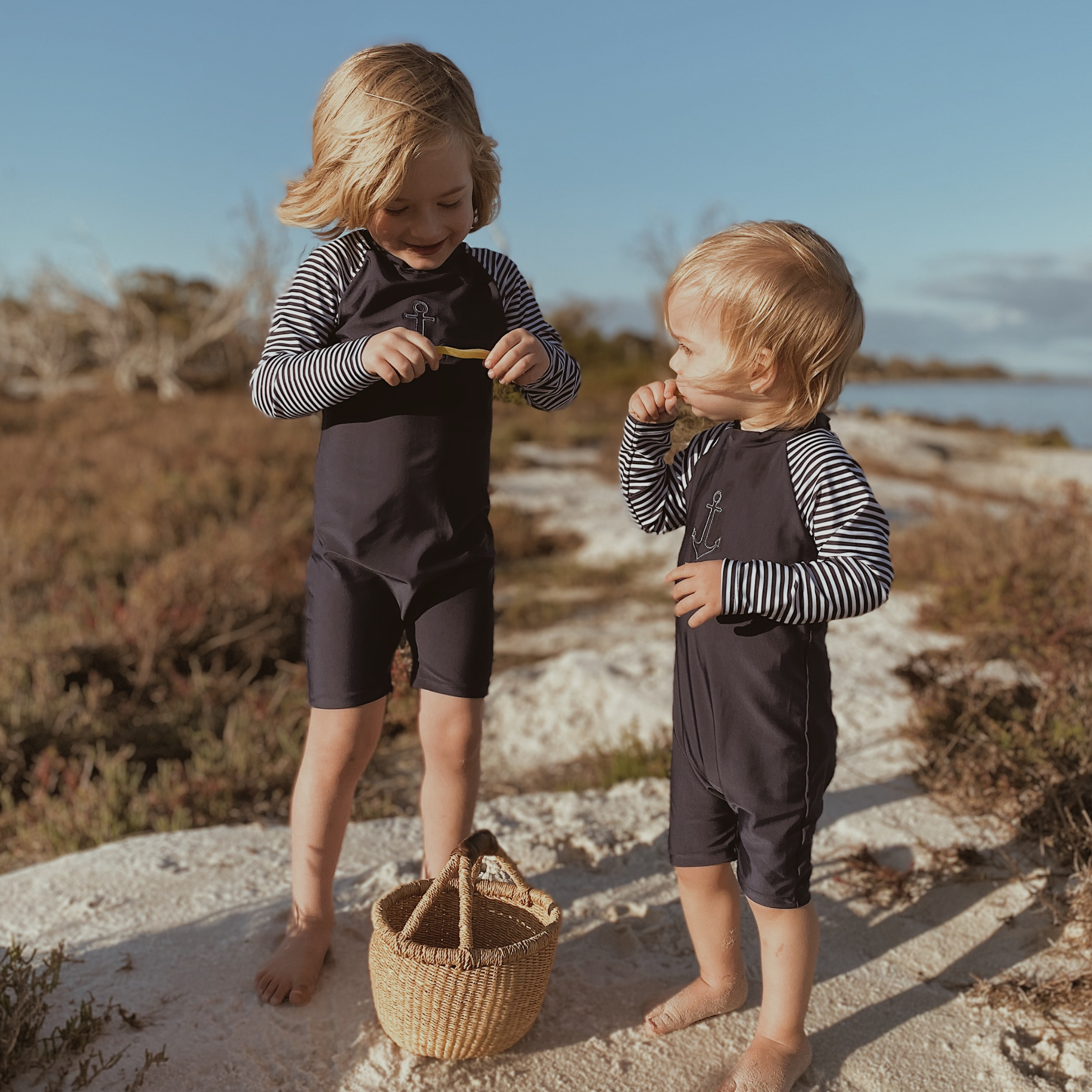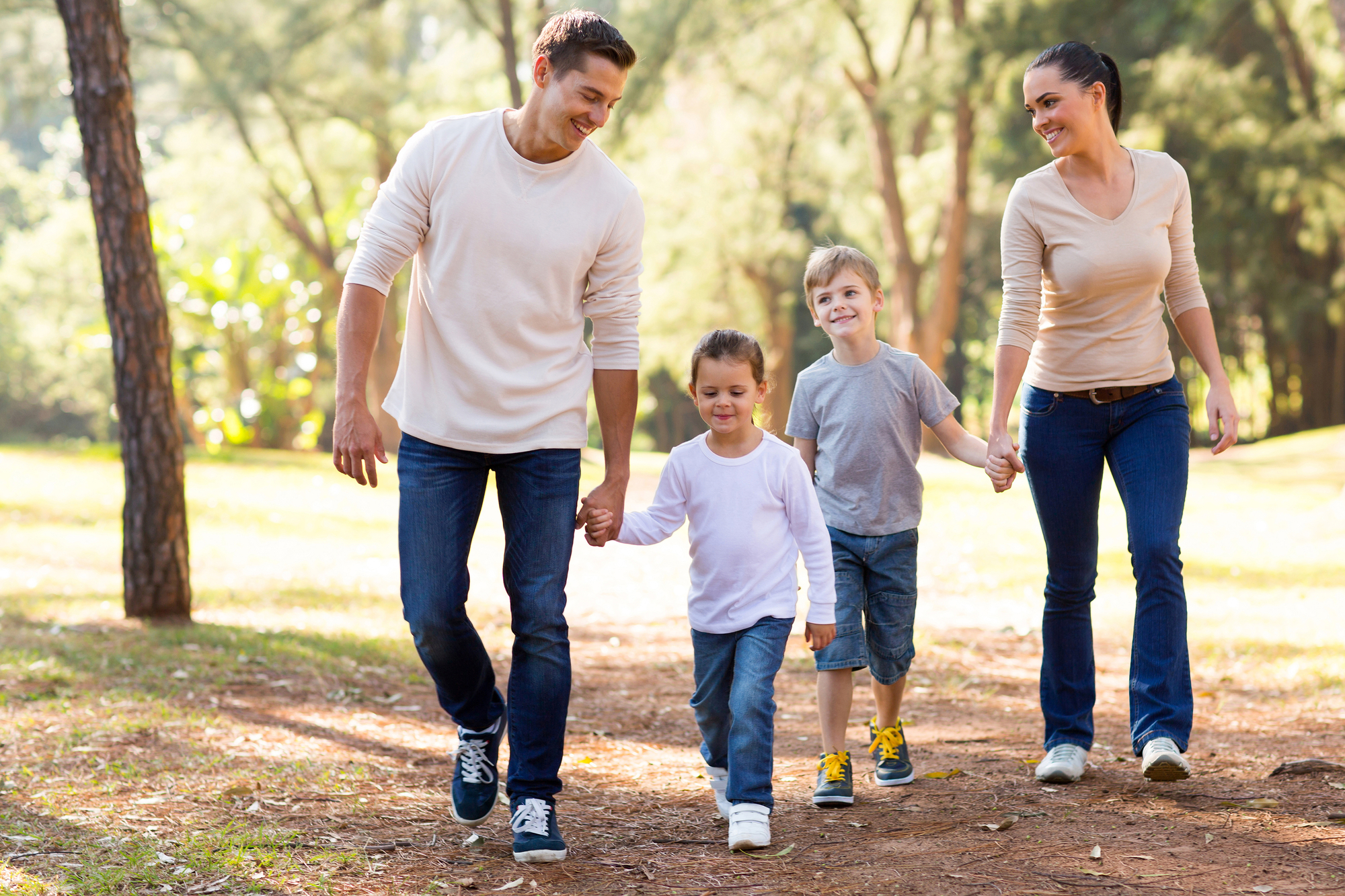There’s a lot going on in the world right now, which can be especially stressful for parents who are trying desperately to shield their children from the impacts and anxieties of climate emergencies and global pollution. With over 194 million chemicals listed on the world’s largest chemical database (CAS, 2022), and another 20 chemicals registered every 60 seconds, it can feel impossible to keep on top of every new thing that is a danger to our kid’s health and vitality. So, where do we start?
From ridding our homes of antibacterial chemicals to checking household items for nasty man-made chemicals known as PFAS (per- and polyfluoroalkyl substances), there are plenty of simple and science-backed steps that we can take as parents that make the world of difference in providing a healthy and natural environment for our children. Here are five to help you avoid eco-anxiety and clean up your home this Earth Day.
-
Start by minimising PFAS in your products and furniture
There’s no better place to start in keeping your children safe than with a group of very nasty man-made chemicals known as PFAS (per- and polyfluoroalkyl substances). Linked to low birth weight, increased risk of obesity later in life (Gao et al, 2022), developmental delays in children (Lee et al, 2021), and even reproductive toxicity and infertility (Chambers et al, 2021), these chemicals have been used in a variety of household items since the 1940s. This includes textiles like carpets, clothes and furnishings; paints, varnishes and sealants; paper coatings and food packaging; cookware through to cleaning and personal care products.
Whilst some manufacturers are phasing out specific types of PFAS (there are many), short-chain PFAS are on the rise, and most of them are remarkably persistent, earning them the name ‘forever chemicals’. PFAS is frequently used on soft furnishings to make them stain and water (and child!) resistant. Ask your manufacturer for the ‘Safety Data Sheet’ to look for any chemicals like PFAS before you buy anything new.
By removing or reducing PFAS and other toxic chemicals from your home, not only will you have a positive impact on the planet, but you may also even find your kids’ persistent allergies become manageable, they sleep better, and they enjoy new levels of vitality each day.
-
Choose your cookware wisely
The most common source of exposure to PFAS is through food and its packaging, so making sure your cookware, storage containers and ingredients are PFAS-free matters a great deal. PFAS are known for their water-resistant, stain-resistant, fire resistant and anti-stick properties and subsequently, which is why they are so common in fast food packaging such as pizza boxes, baking paper and microwave popcorn bags (Susmann et al, 2019).
Unfortunately, a significant majority of non-stick cookware also contains PFAS, and if that well-loved pot or oven cookware is in poor condition because it’s peeling, your exposure has likely gone through the roof. When your pots and pans need replacing, look for ceramic non-stick coating cookware made from natural materials, such as GreenPan’s non-stick cookware and kitchen appliances, which are free from PFAS and toxic metals like lead and cadmium.
It’s also a good idea to store food and beverages in glass, stainless steel and lead-free ceramics, and to avoid plastics, pewter, highly coloured ceramics, ceramics with a corroded glaze and leaded crystal.
READ MORE: Green Up Your Kitchen: A beginner’s guide in bringing eco into every room
- Teach your kids to eat S.L.O.W
In addition to keeping takeaway food to a minimum and preparing meals at home, one way to keep the eco-anxiety at bay is by employing the S.L.O.W method: Seasonal, Local, Organic, and Whole (still in its natural state). Eating in this way is much more than just a trendy food movement – it carries amazing benefits for your children’s health, the family budget and the entire planet, it’s a win-win-win.
Increasing fibre rich foods such as whole grains, flaxseed, chia seeds, and brown rice have been found to lower PFAS in the body (Dzierlenga et al, 2021).
LEARN: Reasons to eat what’s in season: 6 amazing benefits of seasonal produce
-
Invest in water and air filters
Trees are the lungs of the planet and, since industrialisation, they have been under more stress than ever before. With both the planet’s air and waterways exposed to an increasing number of pollutants, as the climate becomes hotter and bushfires become more frequent, burning trees release carcinogenic particles back into the air. Therefore, it’s important to seal your home and use an air filter and a water filter to reduce the amount of PFAS you and your children are consuming.
Household dust is also a major reservoir of allergens and chemicals, including PFAS in the home. Air filters will go a long way to reduce your exposure, but it’s important to consider your water too.
Tap water contains a plethora of chemicals, which have either been added or arise from exposure to household plumbing and tap fittings. In some locations, PFAS may be present in drinking water especially if your source of drinking or bathing water is obtained from the ground or bore water. If you don’t have an air or water filter, then your body then becomes the filter – so it’s a great idea to invest in these simple items!
- No more antibacterial wipes
Somehow we’ve been convinced as a society that all germs are bad and that we need to use harsh chemicals to create a healthy home for our kids. Most of the ingredients used in conventional cleaning products will not only expose your family to potentially toxic, and in some cases known carcinogens, they also have the capacity to mutate bacteria so they become resistant and potentially more dangerous. Our obsession with killing germs and creating a ‘sterile’ home may predispose our children to asthma and allergies that are contributing to the allergy epidemic.
Common items like air fresheners, perfume, pesticides, solvents, paints, cleaning and personal care products contribute to poor indoor air quality. A healthy home is a dry home that smells like fresh air. There is no place for antibacterial chemicals in the home, which has been undoubtedly difficult during a pandemic where many products are marketed as COVID-19 resistant.
Get rid of antibacterial wipes and harsh chemicals, and instead, dust your home with a slightly damp microfibre cloth followed by a clean, dry tea towel. Use the sun to air pillows and mattresses, pet bedding, chopping boards and soft toys. Even use a vacuum cleaner fitted with a HEPA filter and motorised head to reduce the allergen load (house dust mites, mould, pet and pest dander) in the home. Chemical-free cleaning is a lot safer for your family and also for the surfaces that you are using it on.
FOR MORE: 4 of the best natural cleaning products for your home
As parents, there are always going to be a plethora of threats and risks to our children’s health and wellbeing that we want to try and avoid. However, the reality is that we are never going to be able to rid our homes or our communities entirely of all nasty chemicals.
The next best thing we can do is eliminate the things that we know cause harm and do our best to provide a safe and nurturing environment at home by educating ourselves on the impacts of things like PFAS and PFOA. These Earth Day tips are designed to support you to just that and ease the worry and eco-anxiety that comes with being a parent in 2022.
You can learn more about building biology and creating a safer home environment by visiting: https://www.buildingbiology.com.au

Nicole Bijlsma
Nicole Bijlsma is a building biologist, bestselling author (Healthy Home Healthy Family), researcher and CEO of the Australian College of Environmental Studies (est.1999). Building biology is a specialty field that understands the link between health and the health of their homes. Because we spend much of our lives indoors in our homes, the environment that we live in affects our health – positively or negatively.
Nicole is the founder of the Healthy Home (Building Biology) movement, which was created to educate people about the health hazards in the built environment. She has lectured at tertiary institutions for over 30 years, has published in peer-reviewed journals and is regularly consulted by the media to discuss mould, electromagnetic fields and toxic chemicals in everyday products.









